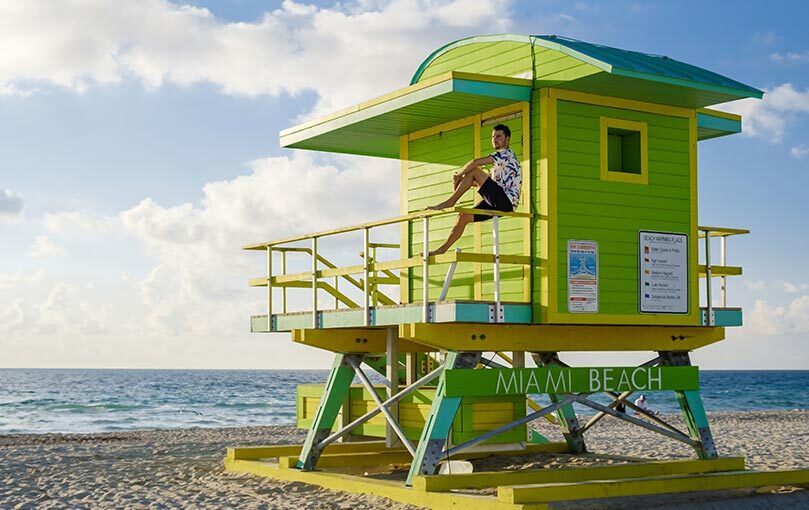Miami is one of the most dynamic and diverse cities in the world. As a result, the city is attracting new residents, visitors, and businesses from across America and around the globe. In fact, it was the number-one moving destination in the United States in 2023, according to the real estate website Redfin.
Companies nationwide are also opening offices or relocating their headquarters to Miami. The list includes financial industry giants like Citadel, cruise lines like Crystal Cruises and Windstar Cruises, and many other smaller companies and tech industry startups.
Miami has also long been one of the top destinations for Latin American immigrants in the United States. 72% of the population in the city identifies as Hispanic or Latino, and 67% speak Spanish at home. That makes it one of the only large cities in America where Spanish is the dominant language.
This diversity prompted American author Tom Wolfe to describe Miami as “a melting pot in which none of the stones melt. They rattle around.”
With such a mosaic of languages and cultures, translation –especially Spanish translation– is a vital part of doing business in Miami. This is as true for local companies as for international organizations.
How Spanish translation opens doors in Miami and beyond
Most people living in Miami speak Spanish at home, so bilingual communication is simply a fact of life for Miami businesses. To support Spanish-speaking staff, translation is a necessity. Human resources documents and training materials should be available in your employees’ native language to ensure understanding.
It would be difficult to find a business in Miami that doesn’t have one or more bilingual employees on staff, but that’s no substitute for the services of a professional translator. Translation requires more skills than just speaking two languages. It also involves writing ability, attention to detail, and understanding and expressing linguistic and cultural nuances in both languages. That makes relying on bilingual employees to translate documents for you a risky proposition unless they’ve been trained as translators and are experts in the relevant subject matter.
Spanish translation is also a must to reach Miami consumers. Customers seek out businesses that speak their language. For example, a 2020 study from Common Sense Advisory found that 76% of consumers were more likely to purchase a product if product information was available in their native language. To stay competitive in the diverse Miami marketplace, your business needs marketing and informational content available that appeals to this predominantly Spanish-speaking population.
Miami: The Gateway to Latin America
While the city has many attractions, Miami is also a jumping-off point for businesses that want to connect with Latin American markets to the south. With direct flights available from the Miami airport to countries like Colombia, Chile, Peru, and Mexico, the city is often described as the gateway to Latin America. In fact, 43% of flights from the US to South America depart from Miami.
As The Economist observes, “Miami has become a commercial hub for the hemisphere. Miami-Dade County, which comprises the city of Miami and around three dozen municipalities, is where 1,200 multinational corporations have set up the headquarters of their Latin American operations.”
Doing business in Latin America requires professional translation help, with expertise in everything from legal contracts to marketing to compliance. Contracts must be translated accurately to protect the rights of all parties. This is especially difficult since laws, customs, and legal language vary across countries. Packaging and product information also requires precision to ensure compliance with local regulations and ensure consumers are fully informed about what they’re purchasing.
Translating marketing material or advertisements for Latin America requires an in-depth understanding of the language and culture of the country or countries you’re targeting. It’s often not enough to translate word-for-word from English into Spanish. What was an appealing slogan in English could lose all its appeal after a direct translation. In one famous example, the Spanish version of Braniff Airlines’ slogan “Fly in leather” became “Fly naked” after being translated into Spanish. That’s not exactly the high-class image the airline was going for!
Other languages in Miami
Spanish is the most widely-spoken non-English language in Miami, but it’s not the only one. Haitian Creole is the third most common language in Florida, with more than 300,000 speakers in the state. Other common languages include Portuguese, French, Chinese and Russian.
Businesses may also need content in other languages, especially if they cater to tourists.
For example, Miami is a top destination for international travelers. In 2019 alone, over five million people visited Miami from countries outside the US. In addition, 10 to 20 percent of the visitors at theme parks like Disney World and Universal Studios were international. To meet the needs of their guests, Disney World offers translator units that translate information about their attractions into their top guest languages: French, German, Portuguese, Japanese, and Spanish.
Do you need a translation into Spanish (or any other language?) Whether you require documents, contracts, marketing materials, or other content translated, we can help. We’re headquartered in Miami with a worldwide network of professional linguists ready to assist you. For more information or to get a free quote, contact TransForma today!





